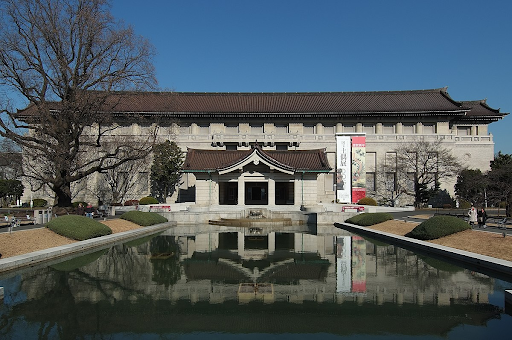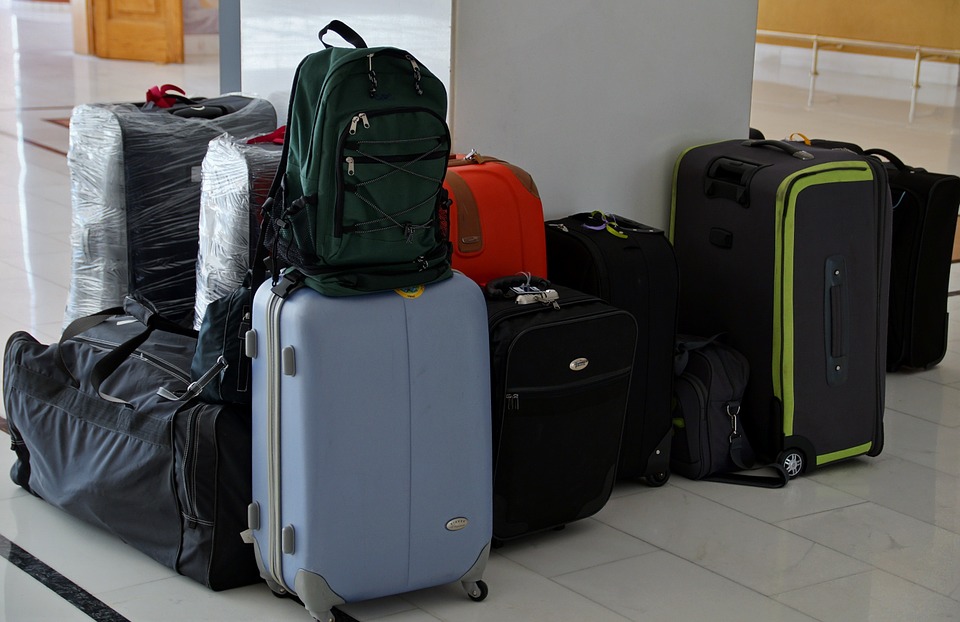Packing is something that you must do before travelling overseas. Packing in advance can save you time and money and avoid the costly and time-wasting. You’ll avoid forgotten air-ticket, overweight baggage lost carry-on and checked-in baggage, travel inconveniences and offloaded situations. Airport security rules might surprise you with its checklist of what and what not to bring. Being aware of packing tips can save you time and money and lets you travel seamlessly.
-
Plan your checklist
Before packing up, use a checklist of things that you should bring. Categorize them into documents, clothing, accessories and electronics.
Travel documents - Depending on your visa application, length of stay and entry status, you’ll have to carry some of these documents.
-
-
Passport - Passports must be valid at least for 6 months before expiry. Currently, new passport applicants can apply for passports with 10-year validity. Take note that passports contain sensitive microchips that must be taken care of.
-
Advance parole (for refugees and asylees)
-
Reentry permits
-
Passport cards
-
Air ticket - You can get an air ticket as a stub or as an electronic ticket (e-ticket). Some airlines offer e-ticket and online booking.
-
Visas - Visa came from the Latin word “charta visa” that means paper that has been seen. Visa is an entry permit granted by the country’s embassy. The document might be stamped in your passport or given as an A4 sized paper.
-
Depending on your nationality, you may or may not need a Japanese visa. Here’s a reference:
Clothing, accessories and hygiene kit - These constitutes personal and hygiene items.
Clothing - Because Japan is a long archipelago country that straddles four climatic zones (humid continental, temperate, Highland, and subtropical), (from the north Russian sea border to the south of Taiwanese and Philippine sea border), you’ll need to diversify your clothing according to the climate of your destination. For instance, if you go to Tokyo in December and January, you must bring jackets and mittens during winter. Generally, you must bring this list categorized into the season:
- Autumn (September, October, November) - Clothing for men includes long-sleeve shirt and cardigan. Accessories include flats, sneakers and an umbrella. For women - jeans, long skirt, cardigan, and accessories such as stole, flats and sneakers.
- Winter (December, January, February) - For men and women - jacket, long pants and down jacket and accessories such as a hat, boots, warm tights and gloves.
- Spring (March, April, May) - For men, warm tights, thermal shirt, thick pants and down jacket. For women, a knit skirt, coat and a thermal shirt.
- Summer (June - August) - Temperatures may reach 30°C and the best clothing are those light and thin such as one-piece and sleeveless dress for women and shirt or light long-sleeve for men. Accessories include sandals, sneakers and deodorant (for a sweaty season).
- Rainy season in subtropical Okinawa and Ryukyu (June-July) - For men, jeans, long pants and short sleeve tops and accessories such as boots, sneakers, umbrella and sandals. For women, light skirt, wide pants and accessories such as hat, sandals, wet tissues and antiperspirant. For both sexes, rain cape Teburanbrella (hands-free umbrella and sweater).
Hygiene kit - Toothpaste, deodorants, shaving cream, baby wipes, shampoo and soap. Take note that there are restrictions for these hygiene items depending on your country of origin. In Japan, such restrictions are also enforced. Make sure to refer to an airport’s website to learn about the restricted liquid items.
Accessories - Shoes, earrings, bracelets and watches.
Electronics
The following electronic accessories may depend on your necessity and the place where you’ll use them. Generally, it’s best
-
Smartphone that features navigation apps, currency converters and language translators, and a decent camera.
-
Digital camera - Cameras are indispensable if you want to catch memories of your trip to Japan. Smartphone cams may suffice but if you want high resolution and quality photos include digital single-lens reflex (DSLR) camera.
-
Battery bank (4,000 mAh to 10, 000 mAh or over)
-
Wifi hotspot
-
Mind about things that are prohibited or restricted or considered as valuable at the airport
Most or if not all airports have their list of banned items that can’t be brought. Having some of these things can get you into trouble. Carry-on refers to light and a small bag that does not exceed 22 inches long. Use a carry-on bag for your valuable electronics and travel documents. Checked-in baggage pertains to large and heavy luggage that is delivered to an airline’s ground crew. For the rest of the flight until your landing, you don’t have access to the luggage.
Some items can be brought both in carry-on and checked in baggage while others are can only be brought in checked-in but not in carry-on baggage.
Prohibited list
The following items are not allowed both in checked-in and carry-on baggage. Bringing these items can be confiscated in your country’s customs checkpoint before your departure or upon your arrival at any Japanese customs checkpoint. Here is a customs guide - customs.go.jp and the official website - customs.go.jp
-
Drugs made from animals listed in the Convention on International Trade in Endangered Species of Wild Fauna and Flora or CITES database. Such drugs include tiger bone, bear gall bladder, rhinoceros horn and tiger bone.
-
Certain fruits and vegetables. Due to the risk of pests associated with the said fruits and vegetables, such items can’t be brought to Japan. For more info, visit this official list - maff guidance.
-
Counterfeit credit cards and money.
-
Counterfeit or fake products such as bag, clothing, watches and electronic goods.
-
Explosives such as gunpowder.
-
Guns, firearm parts and bullets.
-
Meat products
-
Flammable items - Butane canister
-
Illegal drugs - These include narcotics such as methamphetamine, cannabis, heroin and cocaine.
-
Images and videos of child pornography
-
Pathogens - Anthrax
-
Materials used for chemical weapons.
-
Prohibited animal products under the Convention on International Trade in Endangered Species (CITES) database. Such products might include elephant or rhino ivory tusk or tiger fur. Refer to CITES database.
-
Radioactive materials
-
Toxic substances
-
Volatile organic chemicals
-
Prohibited items in the cabin - Taser guns and Items with pointed and sharp edges that can be used as a weapon such as scissors, ice pick and bladed items.
-
Prohibited items for both checked-in and carry-on bag - Volatile organic chemicals such as (benzene), kerosene, paint etc.
For more info, refer to the following site:
Japanese Government site
Airports
-
Narita airport list for the prohibited carry-on items
-
Haneda airport list of banned items.
Airlines
Restricted list
-
Restricted items - certain things can be brought in carry-on or checked baggage if they meet the required volume or quantity per person and container. For instance, according to JAL, you may bring liquefied gas lighters in a carry-on but not in checked-in. In the All Nippon Airways website, it mentions that liquids exceeding 100 ml are prohibited in the aircraft.
-
Lighters
-
Pets - Pets can be brought to Japan provided that you can submit some documentation or notification or arrival and quarantine. For more info, refer to pets in and out of Japan and this pet travel guide. If your pet is exotic and falls under the CITES list, refer to the CITES database.
-
Valuable items - These include laptops, smartphone and jewellery that should be placed in carry-on baggage.
-
Cosmetics and medicines - There’s a limit for medications and cosmetics that you can bring. The Japanese customs allow up to month supply. Bring a doctor’s prescription and the letter that states the purpose of the drug. If you exceed the limit, you may need to show a requirement such as the Yakkan Shomei or an import certificate with medical prescription. It takes two weeks before you can receive Yakkan Shomei if you have complete papers.
-
Some over the counter medicine (OTC) - These include most vitamins, paracetamol, ibuprofen and hayfever tablets.
-
Further, your country’s customs law may differ from the Japanese counterpart. If you must bring a medicine due to a minor or serious medical condition, make sure to contact a Japanese embassy or consulate in your country. Here are the links and contacts from the Japanese Government:
Ministry of Health, Labour and Welfare - Info for bringing medicines for personal use
Kanto-Shinetsu Regional Bureau of Health and Welfare
Arrivals at Haneda International Airport, Narita International Airports
TEL: +81-6-6942-4096 FAX:+81-6-6942-2472 e-mail:
E-mail: kiyakuji@mhlw.go.jp
Okinawa Narcotics Control Office
Arrivals at Naha airport
TEL: +81-98-853-7100
FAX: +81-98-853-7101
Kinki Regional Bureau of Health and Welfare
Chubu Centrair International Airport, Kansai Airport
TEL: +81-6-6942-4096
FAX: +81-6-6942-2472
E-mail: kiyakuji@mhlw.go.jp
* Q & A guide for taking medicines to Japan
* A specific Japanese embassy and consulate in your country
-
Cash and gold - Cash exceeding 1 million yen and gold bullion (90% purity and above) exceeding 1 kg. For more info, visit customs.go.jp
For references on restricted, refer below:
Japanese government sites
Airport sites
Airline sites
-
JAL restricted list for checked and carry-on baggage
Pack efficiently
To pack like a pro, optimize your baggage space as much as possible and avoid wrinkled clothing. Here’s how:
-
Roll on socks and pantyhose and stuff them inside to use your every footwear’s space.
-
Place your footwear in heal to toe position to accommodate each other’s space. Now, these footwears would fill up the bottom of your luggage.
-
Fill up the gaps with rolled soft articles of clothing such as jerseys, socks, tights, t-shirts, underwears and bras.
-
Minimize creasing of jeans, skirts and coats by placing them in an interleaving order. Let’s assume, you are facing the luggage. Start by placing the upper end of the garment inside the luggage while the lower end is draping over the luggage’s edge (right).
-
Place another clothing on the top but now its lower end is in another way around (left). Continue stacking them up in an alternate fashion where the upper edge of each clothing is inside the luggage.
-
Fold all the stacked and alternate clothing in both sides.
-
Put your hygiene items in a ziplock bag to prevent gunk from staining your clothes.
-
Lastly, place your shirts, polos, long-sleeves as the top and last layer in the stack.
Place your travel documents, laptop, smartphone and other valuable electronics in carry-on baggage.
Think about the baggage allowance
Airlines allow baggage allowance for a specific size and weight of carry-on and checked-in baggage and the type of travel class (premium, first, business and economy classes). It’s helpful to weigh your baggage before you head on to the airport. Exceeding baggage allowance may incur extra charges. The following are the references:
Packing efficiently and knowing what to bring and not to bring to Japan can save you time and money. You’ll save some time and money from reducing articles from baggage because of exceeded baggage allowance. Make sure to contact a Japanese embassy or consulate in your country and learn more about what you can bring in Japan.






